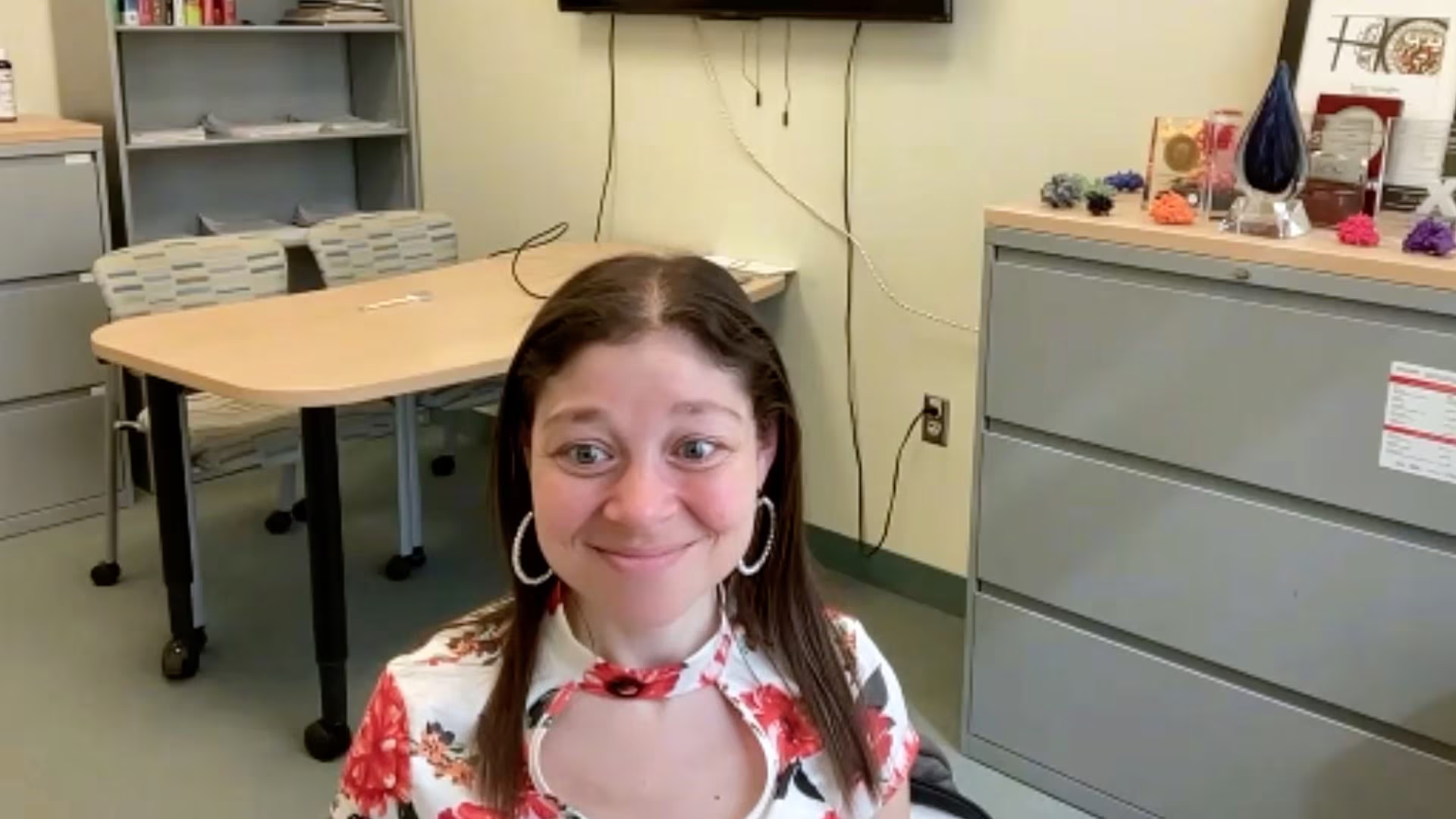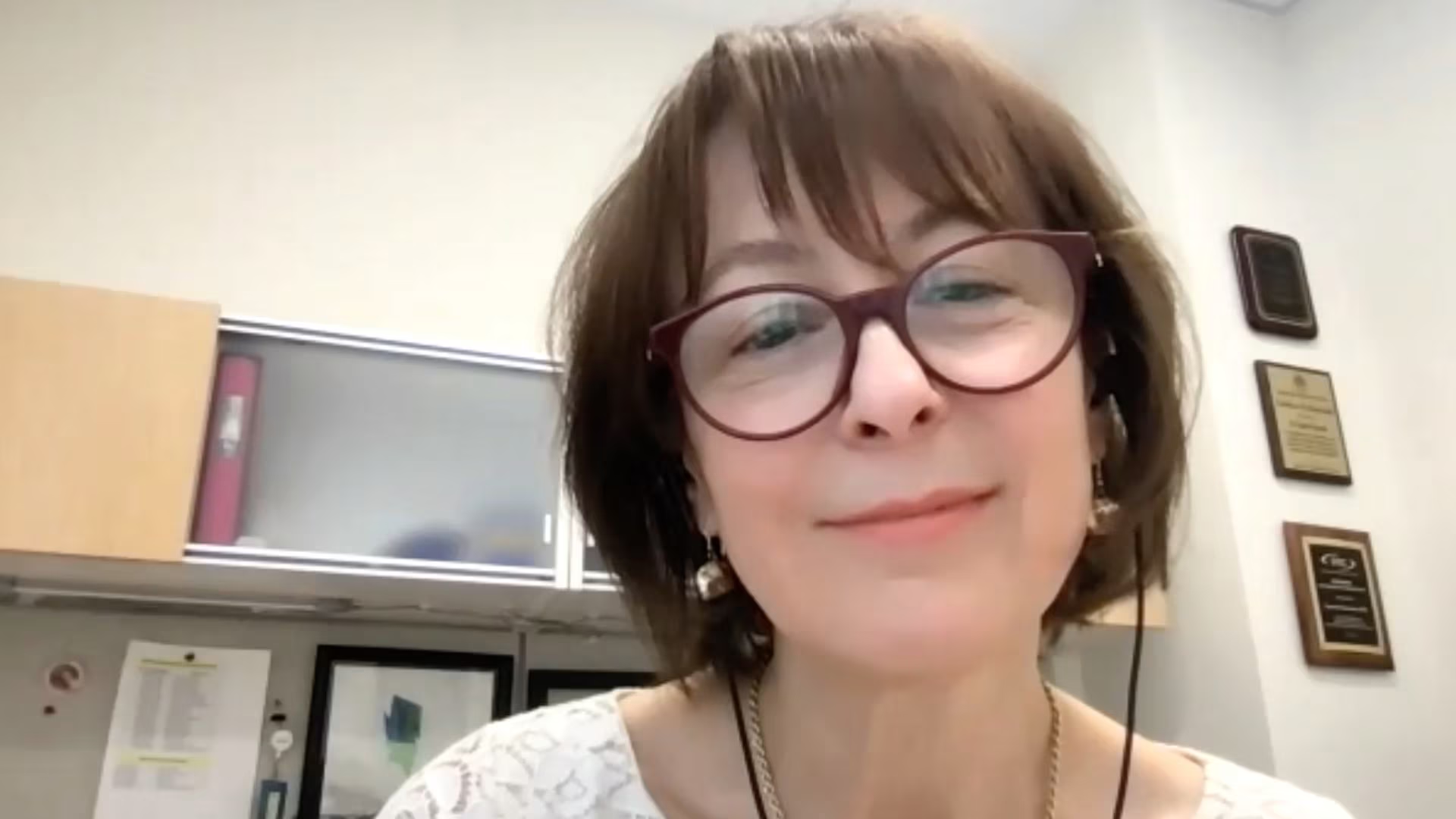DNA damage as a target and predictor of treatment response in immunotherapy: Sandra Demaria, AACR 2023 (Part 2)
A defective DNA damage response in cancer cells can lead to genomic instability and impact the immunogenicity of tumours, improving the efficacy of immunotherapy treatment approaches. It was a pleasure to talk with Professor Sandra Demaria (Weill Cornell Medicine, New York, NY, USA) to discuss how radiation-induced DNA damage is targeted in treatment strategies with immunotherapy, the rationale for combining DNA damaging agents with immunotherapies, and how DNA damage is used as a predictor of treatment response.
‘The radiation-induced DNA damage response modulates cancer cell immunogenicity and response to immunotherapy‘ was presented at AACR 2023, April 14-19, 2023.
Questions
- How is radiation-induced DNA damage targeted in treatment strategies with immunotherapy and what is the rationale for combining DNA damaging agents with immunotherapies? (0:14)
- How can DNA damage be used as a predictor of treatment response to immunotherapy? (3:30)
- How can these findings be used to improve outcomes with immunotherapy? (7:03)
Disclosures: Sandra Demaria discloses consulting for Johnson & Johnson, Genentech, and Astra Zeneca; receiving grant/ research support from Boheringer-Ingelheim, Lytix Biopharma, and Nanobiotix (all to her Institution); serving on advisory boards for Lytix Biopharma; and receiving honoraria/honorarium from Lytix Biopharma, Johnson & Johnson, Genentech, and Astra Zeneca.
Support: Interview and filming supported by Touch Medical Media Ltd. Interview conducted by Victoria Jones.
Filmed in coverage of the 2023 AACR Annual Meeting.
Click here for more content on immuno-oncology.
Transcript
How is radiation-induced DNA damage targeted in treatment strategies with immunotherapy and what is the rationale for combining DNA damaging agents with immunotherapies? (0:14)
What we have learned particularly for ionizing radiation but that’s true also for some other type of chemotherapeutic agents, particularly those that target DNA as well and cause DNA damage- that they exacerbate this process of displacement of DNA to the cytosol where it can activate this pathway, known as the cGAS/STING pathway that leads to the interferon production. Basically, it’s almost like a viral mimicry process. You sort of increase immunogenicity of the cells by making them look like they were virally infected to the immune system. In addition, radiation can also damage the mitochondria and expose mitochondrial DNA, it’s a major source of DNA that can activate this pathway of viral defense. These are two of the best studied mechanisms that link the ability of radiation to activate the immune response against the tumours, through this innate immune signalling. There is, however, new evidence that other processes may also be important, including epigenetic changes that lead to the expression of some of the endogenous retroviruses and very recently perhaps other types of nucleic acid, including some RNA based, you know, double stranded RNAs, the transposons and other type of nucleic acid that can also activate signals in the cells: the common final pathway is activation of interferon and NF-κB pathway with production of a lot of pro-inflammatory cytokines that attract the immune system. That’s why radiation can be really working well in combination with immune checkpoint inhibitors, particularly for tumours that do not have an immune inflamed environment and tend to not be responsive to checkpoint inhibitors. Of course that’s something that we have seen in a lot of the preclinical models. There is also some evidence in patients, but it it’s not that simple and we really are learning how to improve on this combination of radiation and immunotherapy. There are a lot of other variables that need to be addressed and understood to improve the efficacy of this combination in the clinic.
How can DNA damage be used as a predictor of treatment response to immunotherapy? (3:30)
We know that the cells that are more genomically unstable tend to be actually also more likely to generate spontaneous anti-tumour immune responses. The best and most clear cut example is, of course, tumours that have microsatellite instability, they contain a lot of mutations. We know that mutations actually can be immunogenic because they will generate changes in self-proteins that make them look like non-self and that’s what the immune system recognizes and so it is really important. We know that this is true across different histology’s. Of course, there is a lot of evidence in colorectal cancer, but it is true for many other tumour types, even pancreatic cancer, if you have a mutation that makes the tumour microsatellite unstable, it will be more likely to respond to checkpoint inhibitors, immune checkpoint inhibitors like anti-PD1 agent or anti-PDL1 agent. So, in fact, there is an approval, at least in the United States, for this type of drug for all tumour types, irrespective of histology, that have a MSI instability. What is interesting is that people thought, this tumour has so many mutations, they produce so many neoantigens, that’s what the mutation generated antigens are called. But recent evidence actually shows that it’s not just the neoantigens it’s also that they activate very efficiently the same viral mimicry pathway defense pathways. Three papers that came out in the last year and a half or so really showed that you also need signalling and activation of interferon pathway in these tumours to get the anti-tumour immune response going. Two of the papers were published in Cancer Cell, from Yang-Xin Fu group and Guo-Min Li, and another one from a Canadian group led by Christine Baker and I think it’s a very nice example of how the DNA damage response can lead to different, very important key requirements, you know, signal one, so to speak, and maybe signal two. What we call in immunology signal one being an antigen that T cells can recognize as a strong antigen because it’s different from a self-antigen to which the immune system is tolerant for the most part, as well as generating danger signal pro-inflammatory cytokines that really activate the innate immune pathways that are both required to get the immune response going against the tumour.
How can these findings be used to improve outcomes with immunotherapy? (7:03)
There is a lot more to be learned. But one example is probably targeting some of the repair pathways together with radiation. So there are studies actually by Kevin Harrington group in the UK showing that if you inhibit ATR, which is one of the two key pathway of DNA repair, I mean, it’s one kinase that is very important for DNA repair. If you inhibit that, you can increase the formation of these micro nuclei, these, you know, displaced DNA and make the tumour more immunogenic in combination with radiation. So that’s one approach. I think there are many other studies looking into how you really use different agents or how you use radiation given in different ways. Because we know that radiation is not like “one thing” you can use very different doses and fractionation to elicit different responses in the cells. So there is a lot of work to try to understand what is the best way to give radiation and also how that needs to be personalized based on the characteristic of a given tumour. For instance, there is new evidence that the mutational status of P53 may be important to determine how well this viral mimicry pathway is activated in cancer cells and so maybe that’s something we have to start understanding. Will patients that have a certain mutation be likely to respond better than others? Do they need something else? Do they need a different radiation dose or do they need a different combination of agents to actually achieve what we are trying to do, which is basically to use radiation to convert the tumour into an in situ vaccine and elicit an immune response in the patient.
Subtitles and transcript are autogenerated.






